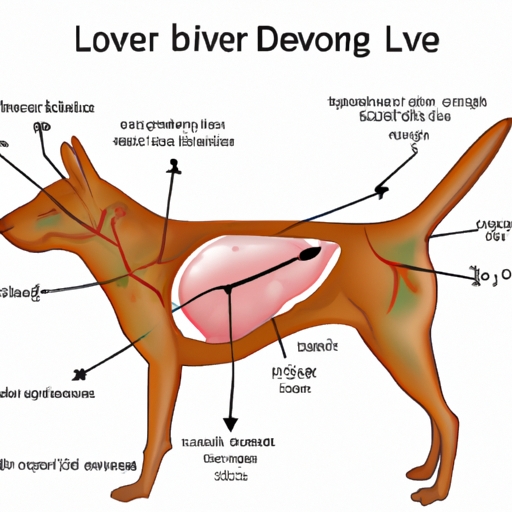Understanding Your Dog’s Anatomy
In your role as a caregiver, you may often find yourself wondering about the intricate details of your dog’s anatomy. It’s crucial to have a basic understanding of your dog’s body, even if you’re not a professional vet. The liver, a vital organ in your dog’s body, is located in the abdominal cavity, right behind the diaphragm. It’s tucked up against the ribs, making it less prone to injury.
Functions of Your Dog’s Liver
The liver in your dog’s body serves numerous essential functions. Here are some of the primary roles it plays:
- Detoxification: It helps to remove toxins from the blood.
- Protein Synthesis: It produces proteins necessary for blood clotting.
- Metabolism: It metabolizes fats, proteins, and carbohydrates, converting them into energy.
- Storage: It stores vitamins and minerals and releases them into the blood as needed.
Recognizing Liver Problems in Your Dog
You, as a caregiver, must be vigilant about any changes in your dog’s behavior that could indicate a problem with the liver. Here are some signs to watch out for:
- Loss of appetite
- Weight loss
- Increased thirst
- Yellowing of the gums and eyes
- Swollen abdomen
If you notice any of these symptoms, it’s important to consult your vet immediately.
Ensuring Your Dog’s Liver Health
Prevention is always better than cure. There are several ways you can help ensure the liver health of your dog:
- Balanced Diet: Feed your dog a balanced diet rich in proteins and vitamins, but low in fats.
- Regular Exercise: Regular exercise helps to maintain the overall health of your dog, including its liver.
- Avoid Toxins: Keep your dog away from harmful substances such as pesticides, lead-based paints, and certain human foods that could harm the liver.
Liver Diseases in Dogs: An Overview
Certain breeds of dogs are more prone to liver diseases than others. Some of the common liver diseases in dogs include:
| Disease | Symptoms | Treatment |
|---|---|---|
| Hepatitis | Loss of appetite, fever, jaundice, increased urination, abdominal pain | Medications, diet modifications, and in severe cases, surgery |
| Cirrhosis | Weight loss, vomiting, diarrhea, increased thirst, jaundice | Treatment focuses on stopping the progression of the disease and managing the symptoms |
| Liver Shunts | Poor growth, weight loss, behavioral changes, seizures | Dietary changes, medications, and in some cases, surgery |
| Gallbladder Mucoceles | Vomiting, abdominal pain, loss of appetite | Surgery is typically necessary to remove the gallbladder |
FAQ
Q1: Can a dog live without a liver?
A: No, a dog cannot live without a liver. It’s a vital organ performing many essential functions.
Q2: What foods are good for a dog’s liver?
A: Foods rich in protein, like chicken, fish, and eggs, and low in fats are good for a dog’s liver.
Q3: Can liver disease in dogs be cured?
A: While some liver diseases can be managed with medication and diet changes, others might require surgery. It largely depends on the disease and its severity.
Q4: How can I check my dog’s liver at home?
A: You cannot check your dog’s liver at home. If you suspect a problem, consult a vet immediately.
Q5: How long can a dog live with liver disease?
A: The lifespan of a dog with liver disease depends on the type of disease, its severity, and the treatment given.



